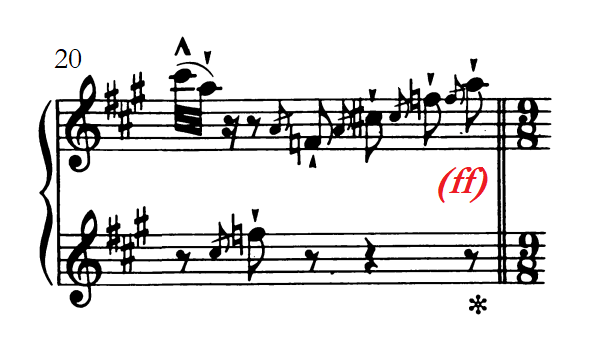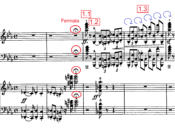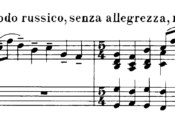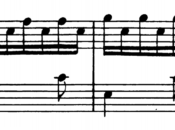Introduction
Gnomenreigen (Dance of the Gnomes) was published in 1863 as part of the Klavierschule, a collection of technical studies compiled by Siegmund Lebert and Ludwig Stark, professors at the Stuttgart conservatory. Liszt dedicated this etude to his former student Dionys Pruckner. It is a brilliant concert etude that showcases the performer’s technical and expressive abilities.
Masterclass

Bar 1: Stay close to the keys. Think of coming “up” from the keys, not “down”. Playing “up” makes it lighter.
Practice with accents on the main notes. It helps you get the right articulation at full speed.
Bar 4: Don’t slow down – there is no ritardando.
Bar 5: Think of them as almost being written together (chord-like). Breaking them too much will slow you down.
Bar 13: Bring out the difference between 32nd notes (demi-semi-quavers) and crushed notes (acciaccaturas)

Bar 20: Keep it strong until the very last note!

Bar 21: Right Hand: Use Arm weight for the melody, and fingers for the accompaniment. (arm, finger, finger, finger, arm, arm, arm…) Associate the amount of sound required with the part of the playing apparatus to be utilized.
Left Hand: Play the last chord with sharpness and energy. Apply the same to similar parts.
Bar 22: Play E-D#-E with the left hand. Use 1-2-1. Apply this fingering to similar parts.

Bar 26: Play the left hand chords with energy.
Bar 29: Start soft, and delay the crescendo until bar 31-32. It makes it more dramatic.
Bar 33: Play the left hand chord with power, and the right hand notes with brilliance.
Bar 102: “Lift” the upbeat! Think of energy.
Bars 110-114: Regroup this section. Think in overlapping phrases. It makes it more natural and musical. The left hand should move in a circular motion to avoid tension.

Bar 117-118: Release tension. Move the wrist with the phrase (down-up) and change pedal per beat. Prepare for the ascending chromatic chords.
Bar 118-120: Left hand fingering: use the 2nd finger for black keys and 1st finger for white keys. It makes the movement more natural.

Bar 126 and 129: Strong left hand! Keep up the power.
Bar 133: Keep the left hand strong until the last chord!
Bar 134: Use 5-3 for the right hand – it’s stronger than using 4-3. Accent on the top left hand note!

Bar 162-165: Pedal on slurred notes. Change per beat.
Bar 167-168: Bring out the top notes.
Analysis
Gnomenreigen is in F# minor. It is in a free formal structure, based on two themes. It resembles a classical rondo-sonata form.
Bars 1-4: Introduction. Crushed notes and staccatissimo 8th notes, based mostly on the dominant chord of F# minor.
Bars 5-20: First theme, F# minor. Augmented chords are used frequently in bars 13-20.
Bars 21-32: Second theme, A major (relative major). Moves through Bb major (bar 27) to
B major (bar 29).
Bars 33-40: Transition. Based on diminished 7th harmony, leading to the return of the introductory theme in F# minor.
Bars 41-56: First theme, F# minor.
Bars 57-68: Second theme, Bb major (an unexpected key). Moves through B major
(bar 63) to C major (bar 65).
Bars 69-76: Similar to before, but leading to a new rhythmic figure based on the first theme.
Bars 77-102: Transformation of the first theme, G minor. Dominant pedal in the bass from bar 84, with many augmented triads played above. Diminished 7ths are used from bar 93.
Bars 103-120: First theme, F# minor, above a dominant pedal, ending with a series of chromatically
rising augmented chords.
Bars 121-143: Second theme, F# major (the tonic major key). Moves through G major (bar 127) and
G# major (bar 129) then returns to F# major (bar 133).
Bars 143-168: Coda, F# major. Continuous run of 8th notes in the left hand. Fragments of the first theme in bars 157-161




